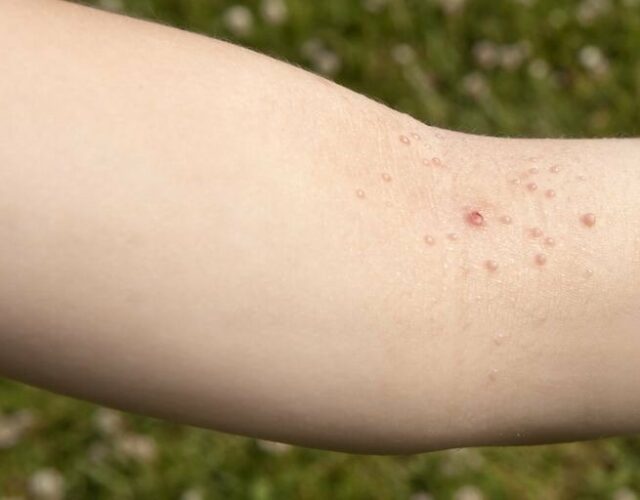When considering the Flu Shot, consider the entire picture.
- Risk of death
- Risk of hospitalization
- Age of children and family members
- Health condition of children and family members
- Your nutrition habits, Life style habits
- Gut Health
- Compare all ingredients. The vaccine has ingredients that make it a viable vaccine. Is it a spectacular list? No. Can it be better? Yes, sais the person who does not manufacture vaccines and prefers essential oils and nutritious food. But consider and compare all the ingredients in medications, supplements, and fluids used to treat the flu. If you refuse the Flu Vaccine due to “ingredients” that is your choice, but will you chug Tamiflu and ignore those ingredients? What about acetaminophen? Will you give that to the kids every 4 hours to reduce fever while knowing that there is a strong association between acetaminophen and asthma???
- The Flu Shot is a choice. Make it wisely!
I welcome comments and suggestions.
In good health, Ana-Maria Temple, MD
References:
Tylenol informationBenadryl informationAmoxicillin informationOrapred informationFlu Vaccine Information
Firs, here is a simple diagram of Cold vs. The Flu symptoms:

Second, getting the Flu Shot for you and your family is a choice.
Let’s take a look at some of the things we need to consider when making this decision.

How effective is the Flu Vaccine (2017-2018 Update)?
Generally, most seasons its 40’ish% effective, depending on how well matched the circulating strains are to the vaccine and how rapidly the influenza virus mutates (changes). Vaccine makers have to predict one year in advance which circulating strain will be causing trouble.
During the 2015-16 season, vaccine effectiveness was 47%, but for the 2017-2018 season, effectiveness is just 10% against the influenza A strain (H3N2) , according to the New England Journal of Medicine.
Of note, in past seasons when the flu shot was only 13% effective, it still prevented nearly 30% of hospitalizations that might have resulted, according to CDC calculations. For older adults, that rate was even higher, at 37%. Plus, the vaccine reduced outpatient visits by 42% that season.
But Wait! We have a Cochrane Database Review to suggest that in adults “Influenza vaccines have a modest effect in reducing influenza symptoms and working days lost. There is no evidence that they affect complications, such as pneumonia, or transmission.”
Hold up! The Journal of Pediatrics found in their latest article of 2017: “Influenza vaccination was associated with reduced risk of laboratory-confirmed influenza-associated pediatric death.” The authors have no association or funding by vaccine companies or the CDC.
To confuse matters more, we have this Article from Canada suggesting that there is an immune issue after the Influenza vaccine. According to the study there was an increase in H1N1 Influenza confirmed cases in those who got the flu shot that season, which did not contain H1N1 strain. This study shows an association and states that it cannot publish an actual conclusion.
And I can go on and on with arguments from both sides and bore you to death.
Influenza Complications Outline
- Pneumonia (antibiotics, fever reducers, cough meds)
- Asthma Exacerbations (albuterol, steroids, antibiotics)
- Ear Infections, Sinus Infections (antibiotics, fever reducers)
- Dehydration, Cough, Congestion, Body Aches – (rehydration fluids, cough meds, pain meds)
- Hospitalization – (lots of medications, stress, and exposure to hospital bacteria/viruses). A total of 17,101 influenza-associated hospitalizations ( October 1, 2017 and February 3, 2018). The highest rate of hospitalization was among adults aged ≥65 years and children aged 0-4 years
- Death. Out of 124,316 documented flu cases nation wide, there have been 63 pediatric Deaths and 2,989 total influenza related deaths
Fluzone and Flulaval (flu shots) Side Effects:
- Pain (57%)
- Redness (37%)
- Swelling (22%)
- Irritability (54%),
- Abnormal crying (41%),
- Drowsiness (38%),
- Appetite loss (32%),
- Myalgia (27%),
- Vomiting (15%),
- Headache (23%)
- Arthralgia (13%)
- Guillain-Barré syndrome (GBS) estimated the risk for GBS after vaccination is 1 or 2 cases of per one million of people vaccinated
My take on the whole thing:
The flu shot provides some protection depending on the season. For this season, 2017-2018, the protection is not great for Flu A, it is ok for Flu B. There is some reduction in transmission of influenza virus in those vaccinated, it’s not perfect. The immune system is a complicated process. I haven’t found enough medical evidence to suggest that the flu shot lowers the immune system response. There are side effects from the flu shot.
According to the Centers for Disease Control and Prevention, the flu virus can travel six feet on droplets from coughs, sneezes or talk. A cough contains 200 million viral particles. Those infected can spread the virus 24-48hr before symptoms develop and for a week or more after getting sick. Less often, flu is spread by touching a contaminated surface, then touching one’s eyes, nose or mouth. Viral particles last for hours on paper, and days on plastic and metal.
Risk factors to be considered
- Kids under 4 years and adults over 65 yrs old have the highest risk for hospitalization and complications from the flu, such as ear infections, pneumonia, and death.
- Kids with chronic disease such a asthma, diabetes, heart disease, neurological disease are at the highest risk for complications and death. Viral Surveillance
- Kids who are sick, are on antibiotics, or have poor gut health may mount a lower response to the flu vaccine then their counterparts. Gut Health has been implicated in the effectiveness of the flu vaccine by the NIH
- Family history of severe adverse reaction to the flu shot needs to be taken into account
- Previous adverse reactions to vaccines needs to be considered

the Flu Vaccine ingredients.
The Flu Shot Ingredients – one dose:
Flulaval Vaccine 0.5-ml vial Inactive Ingredients (2017 manufacturers insert) :
- ovalbumin (≤0.3 mcg),
- formaldehyde (≤25 mcg),
- sodium deoxycholate (≤50 mcg),
- α-tocopheryl hydrogen succinate (≤320 mcg),
- polysorbate 80 (≤887 mcg)
- Thimerosal or Mercury – NONE in single dose vials. Multi dose vial still contain Thimerosal of 12.5micrograms per 0.25ml. Make sure you ask your provider about this detail.
Antibiotics are not used in the manufacture of this vaccine.
Influenza (Fluzone) Quadrivalent Inactive Ingredients (2017 Manufacturer’s Insert):
- 0.5 mL dose: ≤100 μg formaldehyde,
- 0.5 mL sodium phosphate buffered isotonic sodium chloride solution
- and ≤250 µg octylphenol ethoxylate (Triton X-100)
- thimerosal (multi-dose vials only)
Antibiotics and gelatin are not used in the manufacture of this vaccine.
The Flu Remedies Ingredient Lists:
Of note, these remedies are used multiple times daily, for many days in a row:













